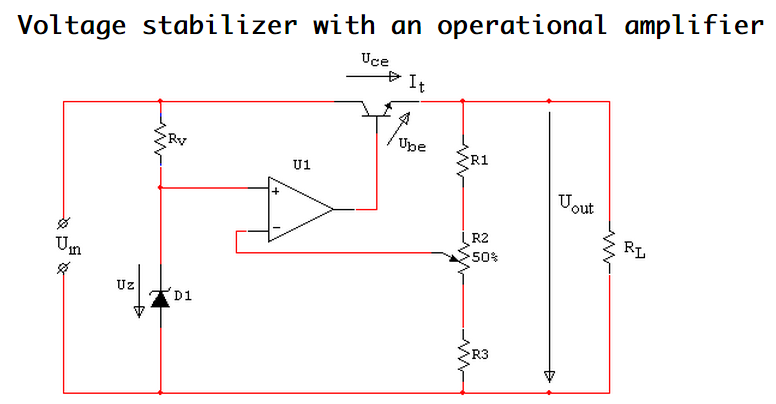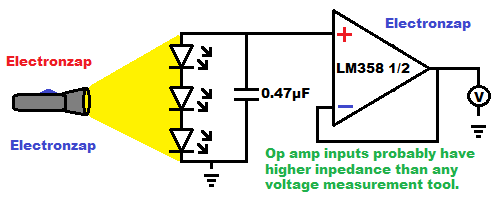

If you casually use 1MegOhm resistors, a surprise awaits. At 125 ° C, the input current into dates of FETs or the necessary ESD circuitry, may have increased 1,000s or 1,000,000X.

Input resistance will be different from Input (bias or leakage) Current.įET/CMOS input stages will have nano/pico/femto amps of current at room temperature. Examine the parameter table, and the schematic, of the Fairchild UA715 to learn of this benefit.

Input capacitance will strongly depend on whether the input diffpair has been cascaded to minimize Miller Multiplication. Regarding input resistance and capacitance: I then inserted a resistor between the Unity Gain opamp and the 0.16uF capacitor.ġ ohm external dampening => 1dB peaking Place a capacitive load of 0.16uF.į_ring is indeed 1MHz. how close to UGBW is the resonant LC frequency? At worst, you may need to INSERT an external dampening discrete resistor. Now what happens when a Capacitor loads (shunts) this opamp voltage_follower circuit?ĭepends on. What is the inductor value? Given Zl = 2 * PI * F * L, we simply do a division of Zl/( 6.28 * UGBW) = L = 10_ohms/ 62.8MegaHertz, and we find the inductor = 10/62 microHenries = 160 nanoHenries. Analog Devices has some opamps thus characterized.įor our example opamp, the Rout (ZOUT) is 10 ohms at 10MHz, assuming 90 degree phase margin at that frequency. You can see this effect in certain datasheets, if the Zout plot is extended to and past the UGBW.
#Voltage follower op amp full#
What do we know? At the UGBW frequency, the opamp no longer has any control over the output voltage, and the full DC_Rout value appears on the output pin. Knowing the Rout (in this case, its 10 ohms), we know the dampening resistance, and can predict the Q (-3 dB bandwidth will follow) of the R+L+C network. Once we have that value of Inductance, we may shunt the Vout pin with some capacitance, and we can predict the frequency of ringing or of oscillation.
#Voltage follower op amp series#
This effect is exactly that of an inductor in series with the ClosedLoop circuit. How does the circuit perform in a voltage_follower topology?įrom DC to 10Hz, the Rout will be 10/1,000,000 = 10 microOhms.Īs the open_loop gain rolls off with increasing frequency, the decreasing loop gain produces a RISING Zout with a phase_shift. Our opamp has DC_gain of 1e+6, F3dB of 10Hz, Unity Gain Band Width (UGBW) of 10MHz, and output loop Rout (at DC) of 10 ohms. Some high speed bipolar opamps run their output stages at higher currents, and you will see plots or values in the param tables, of 15 ohms or 10 ohms, again these values are * OPENLOOP. Operating those 2 devices at 0.5mA produces an incremental Rout, of each bipolar device, of 52 ohms with the 2 emitters driving Vout effectively in parallel, the Rout is halved to 26 ohms OPENLOOP. Output stages of complimentary bipolar (modern opamps) will have a class AB circuit that drives the Vout pin. The manufacturer may or may not give you a typical number in the parameter tables. The manufacturer may or may not give you a plot versus frequency, for Av=+1, Av = -1, Av = -10, etc. These values will vary from opamp to opamp, from technology to technology, from specific opamp internal circuit to other specific internal circuits after reading this answer, you will understand this dependency.
#Voltage follower op amp plus#
The effect of Closed Loop Zout being INDUCTIVE plus a small Resistance, is crucial in understanding why some values of Capacitors will cause ringing or oscillation when shunting the OpAmp output pin. To arrive at ClosedLoop values, we'll first understand the OpenLoop performance of a "typical" opamp. We will predict values, or ranges of values,ĭuring this answer. The output impedance of an opamp is well modeled as a INDUCTOR, in series with some small resistance.


 0 kommentar(er)
0 kommentar(er)
